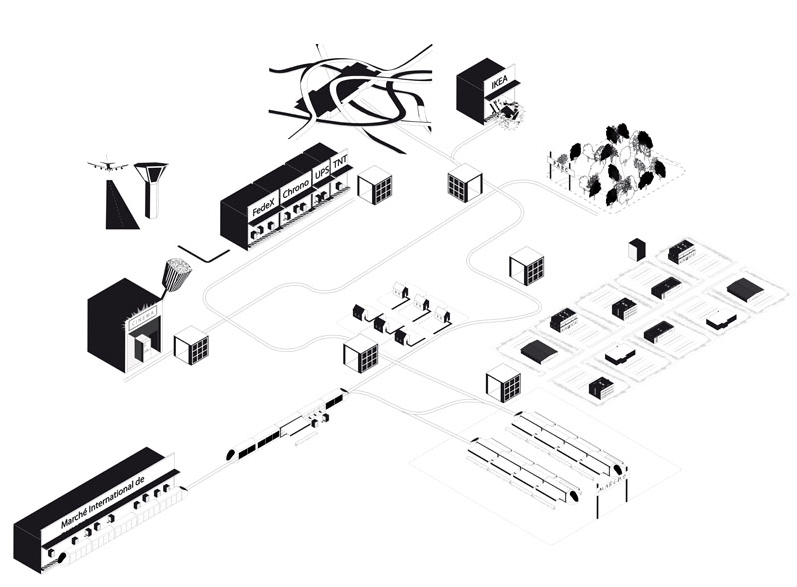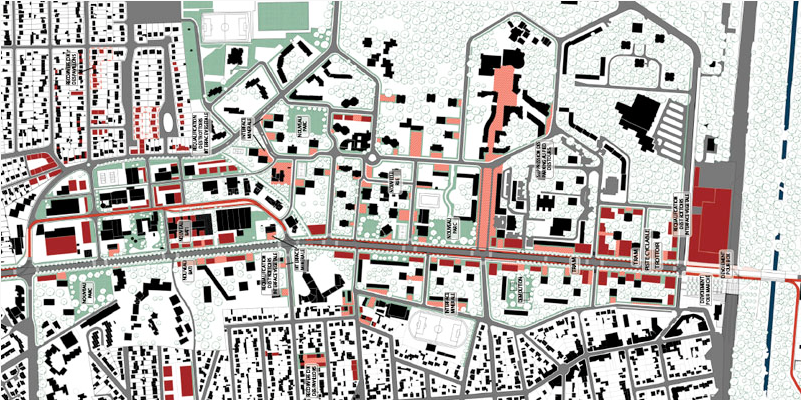
Alliance pour Sainte-Catherine | PFE (2010)

Tremblay, as a typical case, works on the scale of the Parisian metropolis, for commuting as well as for those concerning leisure or services, despite the importance of the city’s employment area. Is there a real continuity between all these journeys, these routes, which allows us to feel the metropolis at the local state? The monopoly of the hyper-link, which makes it possible to erase the distance thanks to the speed, would be responsible for the discontinuity of the territories and thus, of a fracture between near and far.
We propose the implementation of an urban strategy for the city of Tremblay. It is a question of re-questioning the current capacity of the city to satisfy the needs of its inhabitants who do not own a car and to set up a sustainable relationship between the body and the city, both at the local level (the district, the daily territory) and on a global scale (the metropolis, the territory of excellence). The development of slow and linear public transport, on a body scale, in response to a need for local connections is also a fine seam that shows the territory. The local route can be integrated into a more extensive network linking commercial, industrial or logistics areas further away, but belonging to weekly or even daily benchmarks and journeys.





Organizer: Info PFE (2010) – The Metropolis on the Sidewalk – The Body on a Global Scale
Team members: Anne Pellissier, Florian Julien, Idris Yangui
Related articles


Architecture Professional Degree Delisting: Explained

Periodic Table for Urban Design and Planning Elements


History of Urban Planning in India

UDL Illustrator
Masterclass
Visualising Urban and Architecture Diagrams
Session Dates
17th-18th January 2026

Urban Design Lab
Be the part of our Network
Stay updated on workshops, design tools, and calls for collaboration
Curating the best graduate thesis project globally!

Free E-Book
From thesis to Portfolio
A Guide to Convert Academic Work into a Professional Portfolio”
Recent Posts
- Article Posted:
- Article Posted:
- Article Posted:
- Article Posted:
- Article Posted:
- Article Posted:
- Article Posted:
- Article Posted:
- Article Posted:
- Article Posted:
- Article Posted:
- Article Posted:
- Article Posted:
Sign up for our Newsletter
“Let’s explore the new avenues of Urban environment together “










































